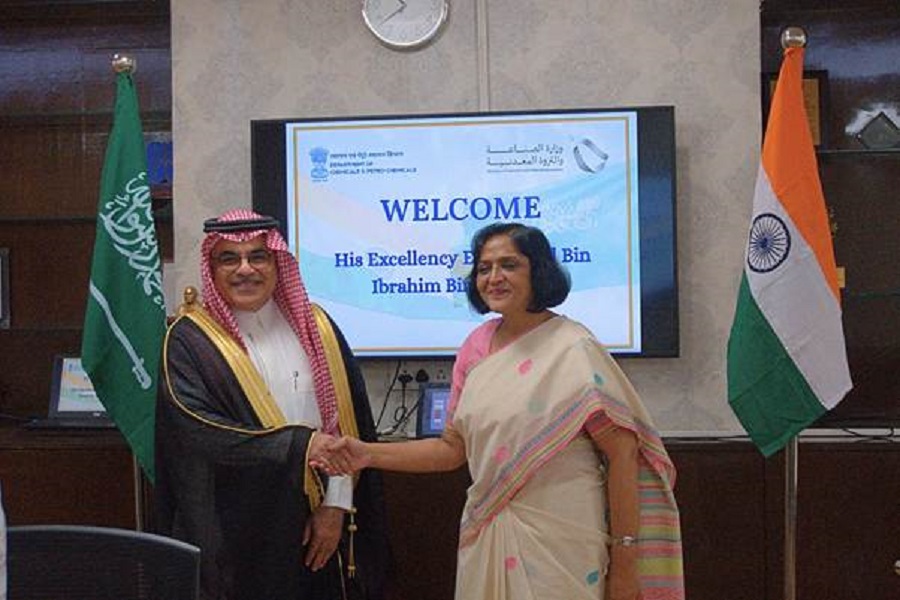🇮🇳🤝🇸🇦 For decades, “handloom” has been a sentimental word in India — a nostalgic whisper of spinning wheels, village looms, and family heirlooms wrapped in soft cotton and pride. But now, that very word has entered the vocabulary of international trade diplomacy.
Recently, India and Saudi Arabia identified handlooms — alongside technical textiles, ready-made garments, and fibres — as key areas of bilateral collaboration.
That’s not just another line in a trade statement.
That’s a tectonic shift.
Because what it really means is this:
👉 Handloom is no longer a charity case. It’s an industry.
👉 Craft is no longer a rural pity story. It’s a national export story.
🧵 The Big Shift: From Cultural Heritage to Strategic Asset
For years, Indian handloom policy operated in a sentimental bubble — “preserve the art, support the artisan.” Noble, yes. But it also quietly kept handloom in a museum, not a marketplace.
Now, with Saudi Arabia on board — a country heavily investing in non-oil diversification, fashion, and cultural industries under its Vision 2030 — we’re talking about integration, not isolation.
This signals that handlooms are now being seen as an economic tool, not merely an emotional one.
Imagine the shift — the same looms once used for temple wear or traditional sarees could now produce sustainable, naturally dyed, ethically sourced fabrics for global buyers who are desperate to replace polyester with provenance.
🌍 Saudi Vision 2030 Meets Indian Tradition
Saudi Arabia’s Vision 2030 is about reducing oil dependency and building new pillars — tourism, technology, and creative industries.
India, on the other hand, has a goldmine — literally millions of artisans, spinning sustainability by hand for generations.
When these two worlds meet, something bigger than trade happens:
It’s heritage meeting modernization.
It’s ancient skill meeting futuristic economy.
If this collaboration translates into real projects — joint design labs, export facilitation, or co-branded collections — we could be looking at a historic rebranding of Indian handlooms on the global stage.
Not just as “beautiful old textiles,” but as carbon-neutral, human-made luxury.
⚙️ Why It Matters More Than It Looks
Most news outlets buried this line in a diplomatic press release. But the Save Handloom Foundation sees it differently.
This single inclusion of “handloom” in a bilateral textile discussion means:
- Policy Recognition: Handlooms are finally being mentioned in the same breath as technical fibres and RMG (Ready-Made Garments). That’s industrial legitimacy.
- Export Revival: Indian handlooms, once major global exports (pre-Industrial Revolution), might reclaim their seat at the trade table.
- Sustainability Diplomacy: India can now use handloom as its soft-power weapon in global climate diplomacy — promoting natural fibres, zero-carbon production, and rural employment.
- Weaver Dignity: When global policy mentions your craft, your status changes — not as a beneficiary, but as a contributor to national GDP and diplomacy.
🚫 But Here’s the Catch — And It’s a Big One
If the government treats this just as symbolism and not system, we’ll lose another golden moment.
Because let’s face it — the word “handloom” in a press release means nothing if the real weaver in Koppal, Salem, Chendamangalam, or Sualkuchi still earns ₹300 a day.
If India is serious about exporting handlooms to Saudi Arabia or anywhere else, we must first:
- Digitally authenticate every handloom product. (Through Digital Product Passports & Blockchain traceability.)
- Build export hubs around cooperative societies, not middlemen.
- Train weavers in global standards, quality, and packaging.
- Ensure fair pricing and pre-funding — no export deal should be built on exploitation.
Otherwise, we’ll just be exporting exploitation wrapped in beauty.
💡 The Save Handloom Foundation View
At Save Handloom Foundation, we believe this India–Saudi collaboration could be a turning point — if executed with transparency and technology.
We’re already working on Digital Product Passports (DPP) and Blockchain-backed authenticity systems that can help trace every handloom product from yarn to shelf.
If such frameworks are embedded in export agreements, it ensures not just trade, but trust — and that’s what global buyers crave today.
This is not just about exporting cloth.
It’s about exporting ethics.
🔥 Final Thought
For centuries, our looms have been weaving stories.
Now, those stories might finally cross borders — not as charity exhibits in craft museums, but as sustainable fashion commodities in international markets.
When India and Saudi Arabia sit at the trade table discussing handlooms, the message is loud and clear:
The world is finally realizing what India forgot — our future lies in our threads.
And this time, those threads could stitch together not just fabrics, but futures.
Would you like me to adapt this into a LinkedIn-style version too — something sharp, under 350 words, that can go viral for Save Handloom Foundation’s page with a catchy opening line and emoji balance?

